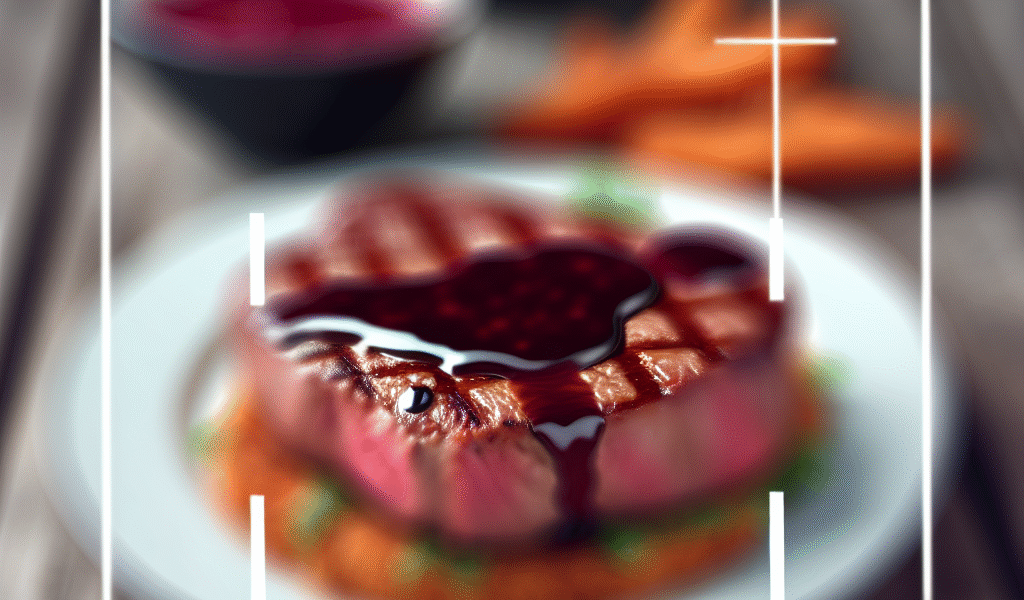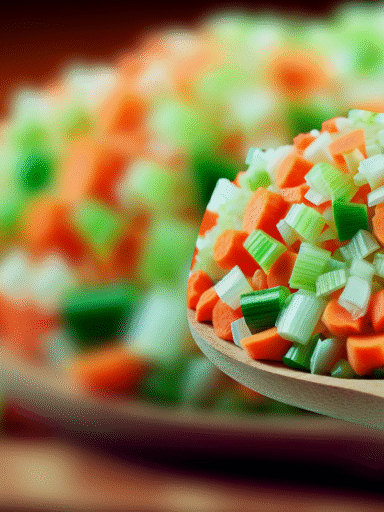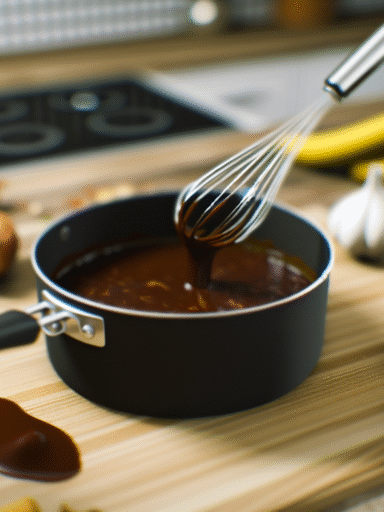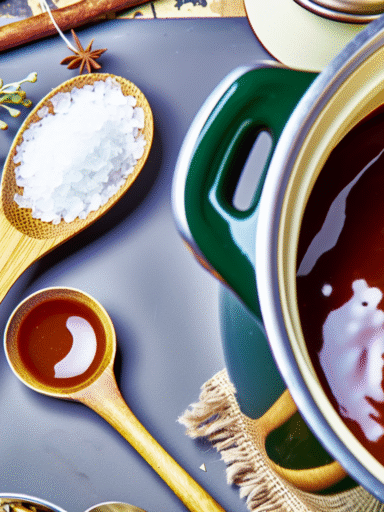Red Wine Reduction
Tags / Categories: savory, rich, aromatic, red wine, shallots, garlic, thyme, classic French, sauce, steak sauce, dinner sauce, Mediterranean, reduction sauces
Quick Info Box
- Prep Time: 5 minutes
- Cook Time: 20 minutes
- Total Time: 25 minutes
- Difficulty Level: Easy to Moderate
- Yield: About 1 cup (4 servings)
Introduction
Nothing elevates a perfectly cooked steak or roasted chicken quite like a luscious Red Wine Reduction. This sauce is all about concentrating the bold flavor of red wine with savory aromatics and a touch of sweetness, delivering a silky, deeply flavored glaze. Whether drizzled over meat or vegetables, it’s a simple way to add a touch of elegance to your dinner table.
Ingredients
- 1 cup dry red wine (Cabernet Sauvignon or Merlot work beautifully)
- 2 tablespoons unsalted butter
- 2 shallots, finely minced
- 2 cloves garlic, crushed
- 1 sprig fresh thyme (or ½ teaspoon dried thyme)
- 1 teaspoon sugar (optional, balances acidity)
- ½ cup beef or vegetable stock (use homemade or low-sodium)
- Salt and freshly ground black pepper, to taste
Making the Perfect Red Wine Reduction
First things first: grab a good quality dry red wine—you’ll notice this is the star of the show. When you start simmering, your kitchen will smell amazing right about now, so get ready!
- Sauté aromatics: Melt 1 tablespoon butter in a medium skillet over medium heat. Toss in the minced shallots and garlic; cook until translucent and fragrant, about 2-3 minutes. Be careful not to burn the garlic—nobody likes bitter garlic bits.
- Deglaze with wine: Pour in the red wine and add the thyme sprig. Bring the mixture to a gentle boil, then reduce to a simmer. This step is all about letting the alcohol cook off while intensifying the wine’s flavor. Your sauce will slowly reduce and thicken—keep an eye on it, and stir occasionally.
- Add sweetness and stock: After about 10 minutes, once the wine is reduced by half, add the sugar if you want a slightly smoother balance and stir in the beef or vegetable stock. Keep simmering until the sauce thickens enough to coat the back of a spoon (~5-7 minutes). A good tip: don’t stress if it’s a little chunky from the shallots; that’s part of the charm!
- Finish with butter and seasoning: Remove the thyme sprig, then whisk in the remaining tablespoon of butter to give the sauce a glossy finish. Taste and adjust salt and pepper as needed. Voilà—you’ve got yourself a silky red wine glaze.
Serving Suggestions
This versatile sauce shines when paired with hearty proteins and comforting dishes:
- Drizzle over a juicy grilled or pan-seared steak for that classic bistro experience.
- Complement roasted lamb or pork tenderloin with the rich, wine-infused flavors.
- Pour a modest amount over sautéed mushrooms or roasted root veggies for a vegetarian delight.
- Use as a sauce base for slow-cooked braised beef or even a simple beef bourguignon.
Origin & History
The Red Wine Reduction is a cornerstone of French cuisine, rooted deep in the country’s love of wine and refined sauces. Often paired with meat dishes, it evolved as a means to capture and amplify the rich flavors from pan drippings and wine, making ordinary dinners feel like an occasion. Fun fact: classic versions often call for a bit of demi-glace, but home cooks can achieve great depth with just wine and stock.
Variations & Substitutions
- Wine alternatives: Prefer white wine? Try a White Wine Reduction with shallots and herbs for a lighter touch.
- Non-alcoholic: Use grape juice mixed with a splash of balsamic vinegar and reduce similarly—though some complexity will be missing.
- Herb twists: Swap thyme for rosemary or bay leaves for different aroma profiles.
- Sweeteners: Maple syrup or honey can replace sugar for a richer sweetness but use sparingly.
- Vegan & dairy-free: Skip the butter and finish with a splash of olive oil or a vegan margarine alternative.
Storage & Make-Ahead Tips
This sauce keeps surprisingly well! Store in an airtight container in the fridge for up to 3 days. To reheat, gently warm over low heat—avoid boiling to prevent bitterness. If you want to freeze it, pour into a freezer-safe container and freeze for up to 2 months; thaw overnight in the fridge and reheat slowly on the stovetop, whisking in a knob of butter or oil once warm for that glossy finish.
Nutritional Information (per ¼ cup serving)
- Calories: ~70 kcal
- Protein: 0.5g
- Fat: 5g (mostly from butter)
- Carbohydrates: 4g
- Sugar: 2g
- Sodium: 150mg (varies with stock used)
Related Sauces / Try Next
- Demi-Glace – A rich brown sauce classic in French cooking
- Béarnaise Sauce – Creamy, tarragon-infused butter sauce perfect with steak
- Port Wine Sauce – Sweet, luxurious, great for game meats
FAQ
- Can I use any type of red wine for this sauce?
- While you can use most dry red wines, stick to medium-bodied ones like Cabernet Sauvignon, Merlot, or Pinot Noir for the best balance of acidity and fruitiness. Avoid cooking wines, as they tend to be salty and imbalanced.
- What if my sauce is too thin?
- No worries! Simply continue simmering to reduce it further until it thickens. You can also whisk in a small pat of cold butter at the end—it helps with thickening and adds a silky texture.
- Is this sauce only for red meat?
- Not at all! While it’s classic with beef and lamb, it also pairs beautifully with pork, roasted vegetables, and even some stronger-flavored fish like salmon or tuna. Get creative!
Conclusion
Red Wine Reduction is a timeless sauce that brings a rich, sophisticated depth to any dish without demanding complicated skills. With a few simple ingredients and a bit of patience, you can transform everyday meals into something spectacular. Next time you’re looking to impress or simply add flavor with flair, whip up this elegant sauce—your taste buds will thank you.



